Deepak G. Pawar's Blog, page 4
January 1, 2021
Shri Sankata Nashana Ganesha Stotram
A stuti or stotra is a collection of shlokas recited as a eulogy of one's ishta devta (chosen deity).
In this stotra, taken from the Narada Purana, Lord Ganesha is invoked and His blessings are sought to remove one's obstacles.
The title, which can also be written as 'Sankashtahara Ganapathi Stotram', translates to: 'Ganesha's stotra that destroys troubles'.
Chanting this stotra regularly is said to bestow one with health, wealth and fulfilment of wishes.
It is recommended that this stotra is chanted first thing in the morning after ablutions, facing the East, while focusing on the image/idol of Lord Ganesha with bhakti.
Also read and listen about the other Ganesha mantra in this earlier post.
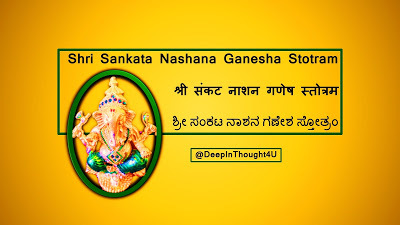
https://youtu.be/KIwW2Q7_H2s
Here is the transliteration (into English, Hindi & Kannada) and translation (into English) of this stotra:
Atah Shri Sankata Nashana Ganesha Stotram
अतः श्री संकट नाशन गणेष स्तोत्रम
ಅತಃ ಶ್ರೀ ಸಂಕಟ ನಾಶನ ಗಣೇಶ ಸ್ತೋತ್ರಂ
This is Sankata Nashana Ganesha Stotra
Narada Uvacha
नारद उवाच
ನಾರದ ಉವಾಚ
Sage Narada said
Pranamya shirasa devam Gouri putram Vinayakam
Bhaktavasam smarenityam ayuh kamartha siddhaye
प्रणम्य शिरसा देवम गौरी पुत्रम विनायकम
भक्तावसम स्मरेन्नित्यम आयुः कामार्थ सिद्धये
ಪ್ರಣಮ್ಯ ಶಿರಸಾ ದೇವಂ ಗೌರೀ ಪುತ್ರಂ ವಿನಾಯಕಂ
ಭಕ್ತಾವಾಸಂ ಸ್ಮರೇನ್ನಿತ್ಯಂ ಆಯುಃ ಕಾಮಾರ್ಥ ಸಿದ್ಧಯೇ
Bow your head in reverence to the Son of Parvathi, Ganesha
He who lives in the devotee, He who grants long life, love and wealth
Prathamam Vakratundam cha Ekadantam dvitiyakam
Trutiyam Krushnapingaksham Gajavaktram chaturthakam
प्रथमम वक्रतुंडम च एकदंतम द्वितीयकम
तृतीयम कृष्णपिंगाक्षम गजवक्त्रम चतुर्थकम
ಪ್ರಥಮಂ ವಕ್ರತುಂಡಂ ಚ ಏಕದಂತಂ ದ್ವಿತೀಯಕಂ
ತೃತೀಯಂ ಕೃಷ್ಣಪಿಂಗಾಕ್ಷಂ ಗಜವಕ್ತ್ರಂ ಚತುರ್ಥಕಂ
First know Him as One with curved tusk, second as One with single tusk
Third as One with blackish-red eyes, fourth as One with face of elephant
Lambodaram panchamam cha shashtam Vikatameva cha
Saptamam Vighnarajam cha Dhumravarnam tathashtakam
लम्बोदरम पंचमम च शष्टम विकटमेव च
सप्तमम विघ्नराजम च धूम्रवर्णम तथाश्टकम
ಲಂಬೋದರಂ ಪಂಚಮಂ ಚ ಶಷ್ಟಂ ವಿಕಟಮೇವ ಚ
ಸಪ್ತಮಂ ವಿಘ್ನರಾಜಂ ಚ ಧೂಮ್ರವರ್ಣಂ ತಥಾಷ್ಟಕಂ
Fifth know Him as One with huge belly, sixth as One who is harsh on foes
Seventh as remover of obstacles, eighth as One who is coloured like smoke
Navamam Bhalachandram cha dashamam tu Vinayakam
Ekadasham Ganapatim dvadasham tu Gajananam
नवमम भालचंद्रम च दशमम तु विनायकम
एकादशम गणपतिम द्वादशम तु गजाननम
ನವಮಂ ಭಾಲಚಂದ್ರಂ ಚ ದಶಮಂ ತು ವಿನಾಯಕಂ
ಏಕಾದಶಂ ಗಣಪತಿಂ ದ್ವಾದಶಂ ತು ಗಜಾನನಂ
Ninth know Him as One with Moon on forehead, tenth as Great Leader
Eleventh as Leader of Ganas, twelfth as having countenance of elephant
Dvadashaitani namani trisandhyam yah pathenaraha
Na cha vighna bhayam tasya sarvasiddhi karam prabho
द्वादशैतानि नामानि त्रिसंध्यम यः पठेनरः
न च विघ्न भयम तस्य सर्वसिद्धि करम प्रभो
ದ್ವಾದಶೈತಾನಿ ನಾಮಾನಿ ತ್ರಿಸಂಧ್ಯಂ ಯಃ ಪಠೇನರಹಃ
ನ ಚ ವಿಘ್ನ ಭಯಂ ತಸ್ಯ ಸರ್ವಸಿದ್ಧಿ ಕರಂ ಪ್ರಭೋ
He/she who reads these twelve names at dawn, noon and dusk
Shall not fear any obstacles, and accomplish every task
Vidyarthi labhate vidyam dhanarthi labhate dhanam
Putrarthi labhate putram moksharthi labhate gatim
विद्यार्थी लभते विद्याम धनार्थी लभते धनम
पुत्रार्थी लभते पुत्राम मोक्षर्थी लभते गतिम
ವಿದ್ಯಾರ್ಥೀ ಲಭತೇ ವಿದ್ಯಾಂ ಧನಾರ್ಥೀ ಲಭತೇ ಧನಂ
ಪುತ್ರಾರ್ಥೀ ಲಭತೇ ಪುತ್ರಾಂ ಮೊಕ್ಷಾರ್ಥೀ ಲಭತೇ ಗತಿಂ
Student will attain knowledge, he/she who seeks money will get wealth
He/she who seeks child will get one, he/she who seeks salvation will attain moksha
Japet Ganapati strotram shadbhirmasai phalam labhet
Samvatsarena siddhim cha labhate natra samshayaha
जपेत गणपती स्तोत्रम षड्भिर मासै फलम लभेत
सम्वत्सरेण सिद्धिम च लभते नात्र समशयः
ಜಪೇತ್ ಗಣಪತೀ ಸ್ತೋತ್ರಂ ಷಡ್ಭಿರ್ ಮಾಸೈ ಫಲಂ ಲಭೇತ್
ಸಂವತ್ಸರೇಣ ಸಿದ್ಧಿಂ ಚ ಲಭತೇ ನಾತ್ರ ಸಂಶಯಹಃ
The fruits of chanting this stotra will be evident within six months
Within a year wishes will be fulfilled, no doubt
Ashtabhyo brahmanebhyashcha likhitva yah samarpayet
Tasya vidya bhavet sarva Ganeshasya prasadataha
अष्टभ्यो ब्राह्मणेभ्यश्च लिखित्वा यः समर्पयेत
तस्य विद्या भवेत सर्वा गणेशस्य प्रसादतहः
ಅಷ್ಟಭ್ಯೋ ಬ್ರಾಹ್ಮಣೇಭ್ಯಶ್ಚ ಲಿಖಿತ್ವಾ ಯಃ ಸಮರ್ಪಯೇತ್
ತಸ್ಯ ವಿದ್ಯಾ ಭವೇತ್ ಸರ್ವಾ ಗಣೇಶಸ್ಯ ಪ್ರಸಾದತಹಃ
He/she who offers this stotra in writing to eight wise people
Will be blessed with knowledge by the Grace of Ganesha
Iti Shri Narada Purane Sankata Nashana Ganesha Stotram sampurnam
इति श्री नारद पुराणे संकट नाशन गणेश स्तोत्रम सम्पूर्णम
ಇತಿ ಶ್ರೀ ನಾರದ ಪುರಾಣೇ ಸಂಕಟ ನಾಶನ ಗಣೇಶ ಸ್ತೋತ್ರಂ ಸಂಪೂರ್ಣ್ಂ
Thus ends Narada Purana's Sankata Nashana Ganesha stotra
Resources/references:
Picture: https://upload.wikimedia.org/wikipedi...
Background music: The Golden Present, Jesse Gallagher
Stotra:
http://sanskritdictionary.orghttps://...November 22, 2020
My father is always forgetting... has he got DEMENTIA?
Dementia is a neurocognitive condition that affects people over 60 years of age. It is characterized by short-term memory loss, confusion, sleep reversal, and odd behaviour.

Find a brief introduction to this complex condition in this video in three languages:
English: https://youtu.be/SS8upBPfsfk
Hindi: https://youtu.be/WesEr0KHM78
Kannada: https://youtu.be/QXCEdKxcnew
Find out more about dementia in an earlier article of mine that was published in Deccan Herald: https://dgvpawar.blogspot.com/2014/06/alzheimers-disease-articble.html
Also read about the effects of meditation on ageing here: https://dgvpawar.blogspot.com/2015/02/article-on-meditation-and-ageing.html
Resources:
Background music: Cosmology by Evocativ
Pictures:
https://loonylabs.files.wordpress.com...September 23, 2020
How can I reduce SUICIDAL THOUGHTS?!
If you are affected by the goings on in the world or in your personal life, and are contemplating taking the extreme step, then please take a few minutes to watch this video.
Whether it is the COVID-19 pandemic that has upended lives across the globe, or the economic crunch that each one of us is facing in its wake, there are reasons galore to feel the blues. Even if these are not the burning issues in your life, there are always others - breakups, bereavement, failure in exams, job loss, and the leading cause for completed suicide in India: being in debt.
While this video is no panacea for all the woes that you may be facing, it is an attempt to help you change your outlook and mindset so that you consider the larger issues of life, and take a step back from making an impulsive decision.

How common are suicidal ideas?What are the causes for feeling suicidal?What are the risk factors for suicide attempt?What should you do if you or someone you know is feeling suicidal?What are the religious and spiritual connotations of suicide?
Find out in in this video in three languages:
English: https://youtu.be/08i4_FGRmB8
Hindi: https://youtu.be/2w346GDm79w
Kannada: https://youtu.be/Qjg98TRvt-A
Please note that the National (Indian) Suicide Helpline number is: 9152987821 or 022-25521111 (by iCall).If you are in and around Bengaluru, you can also reach out to the counsellors of Arpita Foundation (NGO) through their helpline: 080-23655557 (7 am to 9 pm, all days of the week).
For information on suicide care and suicide helplines, please click external link in my earlier article.
Resources/references:
Quotes (all translations into Hindi/Kannada by me):
Suicide is a sin.. . and for many points from the 'larger/spiritual issues' section of the video (also, I recommend reading the book): The Laws of the Spirit World , Khorshed Bhavnagri Man is a Soul... Attributed to Sri Yukteshwar Giri, Autobiography of a Yogi, Paramahansa Yogananda All that we are is... Attributed to Lord Buddha, Thought Power, Swami Sivananda Those things that hurt... Attributed to Benjamin Franklin, In The Road Less Travelled, M. Scott Peck Be in the world... Osho, Autobiography of a Spiritually Incorrect Mystic He who has a why... Attributed to Nietzsche, Man's Search for Meaning, Viktor Frankl While there is life... Brief Answers to Big Questions, Stephen Hawking Om... I am Saakshi... Thought Power, Swami Sivananda Punarapi jananam... Moha Mudgara (Bhaja Govindam), Adi Shankaracharya [with Sanskrit to English translation from: bhakthi.in and sanskritdocuments.org]Music: Sunflower Field, Mocha Music
Pictures: https://gamepedia.cursecdn.com/overwa...
I'm feeling suicidal...! What should I do...?!
If you are affected by the goings on in the world or in your personal life, and are contemplating taking the extreme step, then please take a few minutes to watch this video.
Whether it is the COVID-19 pandemic that has upended lives across the globe, or the economic crunch that each one of us is facing in its wake, there are reasons galore to feel the blues. Even if these are not the burning issues in your life, there are always others - breakups, bereavement, failure in exams, job loss, and the leading cause for completed suicide in India: being in debt.
While this video is no panacea for all the woes that you may be facing, it is an attempt to help you change your outlook and mindset so that you consider the larger issues of life, and take a step back from making an impulsive decision.

How common are suicidal ideas?What are the causes for feeling suicidal?What are the risk factors for suicide attempt?What should you do if you or someone you know is feeling suicidal?What are the religious and spiritual connotations of suicide?
Find out in in this video in three languages:
English: https://youtu.be/08i4_FGRmB8
Hindi: https://youtu.be/2w346GDm79w
Kannada: https://youtu.be/Qjg98TRvt-A
Please note that the National (Indian) Suicide Helpline number is: 9152987821 or 022-25521111 (by iCall).For information on suicide care and suicide helplines, please click external link in my earlier article.
Resources/references:
Quotes (all translations into Hindi/Kannada by me):
Suicide is a sin.. . and for many points from the 'larger/spiritual issues' section of the video (also, I recommend reading the book): The Laws of the Spirit World , Khorshed Bhavnagri Man is a Soul... Attributed to Sri Yukteshwar Giri, Autobiography of a Yogi, Paramahansa Yogananda All that we are is... Attributed to Lord Buddha, Thought Power, Swami Sivananda Those things that hurt... Attributed to Benjamin Franklin, In The Road Less Travelled, M. Scott Peck Be in the world... Osho, Autobiography of a Spiritually Incorrect Mystic He who has a why... Attributed to Nietzsche, Man's Search for Meaning, Viktor Frankl While there is life... Brief Answers to Big Questions, Stephen Hawking Om... I am Saakshi... Thought Power, Swami Sivananda Punarapi jananam... Moha Mudgara (Bhaja Govindam), Adi Shankaracharya [with Sanskrit to English translation from: bhakthi.in and sanskritdocuments.org]Music: Sunflower Field, Mocha Music
Pictures: https://gamepedia.cursecdn.com/overwa...
September 14, 2020
Book recommendation: Laws of the Spirit World
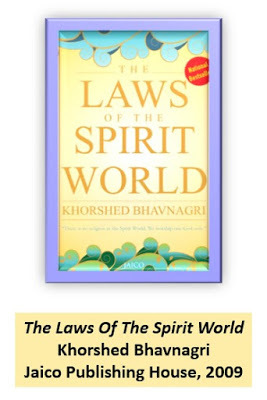
As I have said with other book recommendations, there are times when you do not read a book for its literary merits. Rather, you read for the content: the message it conveys and how it will affect you.
This is one such book.
You might have wondered to yourself, what is life? What is the purpose of our existence? What should our life goals be? Why do have relationship issues? What should we avoid doing? How are we doing in terms of achieving our goals in the phenomenal world, and in the spiritual sense?
If so, then this book is for you.
It only requires two things of you: belief and an open mind. You won't be able to progress much if you don't believe the source of the messages contained in this book. Secondly, if you are the ultra-rational type, who seeks a logical explanation for every occurring, then too, this is not for you.
Apart from the answers to larger issues mentioned above, here is a sample of the some of the words of wisdom that I perused in this book - spiritual mahavakyas, if you like:
'Yes, God exists!''Suicide is sin.''Murder is never part of God's plan.''On Earth, wise men created marriages to safeguard children...''Nothing happens before its time - so just wait and relax...''Do not be judgmental, but use your judgment.''Choose goodness for the sake of goodness itself.''... all thoughts create energy, so be aware of what energy you are creating.''...hope is essential to human survival.''Positivity is a choice no matter what the situation.''Fame on Earth has absolutely no value in the spirit world.''To do God's work means to use your position of strength to help others grow.''Whatever your path, learn to view it from a spiritual perspective.''Instead of feeling great, feel grateful.'Though it is clearly mentioned in the book that 'there is no religion in the spirit world,' I could not help noting the obvious congruence of the messages with those of the scriptures of Sanatana Dharma.
So, here are a few that indicate this:
It is not God, but the Law of Karma that punishes us for our misdeeds.One can accrue both negative and positive Karma, according to the nature of our actions.'...reincarnation means the same spirit being born on Earth life after life.''Take action. Do your best and leave the rest to God.' [To me, this is a direct vindication of the overarching message of the Bhagavad Gita: do your duty and don't worry about the results.]'Yoga is wonderful for the mind, body and spirit.''To know God is to know ourselves, discover who we are, and discover His goodness within us.' [Confirms the message of spiritual unity of all living beings with Brahman, as propounded by Adi Shankaracharya's Advaita philosophy]'True success is spiritual success and not earthly success.' and 'Do not think of power. Think of spiritual strength.' and 'Lead a simple, honest, kind and selfless life.' [underpin the importance of viveka (discrimination), vairagya (non-attachment) and nishkama seva (selfless service), that are advocated for spiritual progress in Hinduism]'The things that you can see are temporary; the things that are not visible are eternal.' [indicative of maya, which is the attribute of the phenomenal world that prevents us from realising Brahman, once again, from Advaita]'There will come a point when Nature itself will erase negativity.' There is also mention of 'shift of Earth's axis' and natural disasters that will wipe away negativity caused by human vice. [comparable to pralayas (great dissolution of creation) that end each of the four yugas (time periods) mentioned in the Bhagavata Purana]Bear in mind the spirit communications delivering these messages are from two recently deceased Parsi gentlemen to their mother. Just like in my other book recommendation, Many Lives, Many Masters, it is reassuring for me to know that our rishis have, over the ages, given us the message of spiritual enhancement, which is only recently being vindicated by non-Hindu thinkers/writers and through scientific studies.
Even if you are a sceptic, it wouldn't hurt to learn through the messages conveyed in this book and put them into practice, if only to become a better human being.
Highly recommended reading from an early age, so that we know what really matters in life and over what pursuits we need to invest our time and energy during our lifetime.
Thank you, Vispi, Ratoo, Khorshedji and Rumiji. May you reach the highest Universe and Realm.
Image source: https://m.media-amazon.com/images/I/5...
August 9, 2020
Mantra for meditation: Om Namah Shivaya
||Om Namah Shivaya||
||ॐ नमः शिवाय||
||ॐ ನಮಃ ಶಿವಾಯ||
This sacred mantra of Sanatana Dharma literally means: 'I bow to Thee, O Lord Shiva'. Since Shiva is the inherent God Principle in every living being, the mantra also has a deeper meaning of, 'I bow to the Divinity within me'.
The mantra is said to be a composite of five syllables (shown as the five petalled flower in the video), each with its own significance:
Naada
(Sound)
Panchamahabhutas
(Five great elements)
Ishakriya
(Functional aspect of Shiva)
Na
Prithvi (Earth)
Creation
Ma
Jala (Water)
Preservation
Shi
Agni (Fire)
Destruction
Va
Vayu (Air)
Concealment
Ya
(Akasha) Ether
Revelation
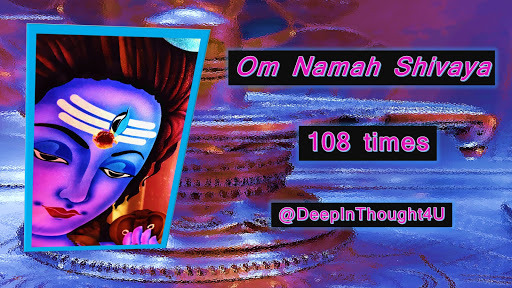
According to Charaka Samhita, the great Ayurvedic text, these five great elements and their variants that are present in the Universe are also present in our bodies, and vice versa. Whatever affects these constituents, also affects the mind and body.
Therefore, the mantra is a salutation to the Lord of all elements, Lord Shiva. It is said to help reduce one's ahamkara (ego), one's worries, and put one in a focused and positive frame of mind.
It is recommended that one begins her/his day by chanting this mantra with the back erect. The number 108 is considered to be a sacred number of Hinduism.
References/resources:
Background music: Lord of the Dawn, Jesse Gallagher
Information:
https://m.timesofindia.com/astrology/...
https://healthyayurveda.com/panchamah...
July 26, 2020
Alcohol: How much is enough?
Yes, we are talking about that liquid whose quantity consumed is second only to water: alcohol.
According to the strength of ethanol content, it is also known as alcopops, beer, cider, lager, wine, sherry, and spirits which are very high in strength and include whisky, rum, vodka, gin and brandy.

Drinking alcohol is common across communities and cultures across the world. It is just something that has fascinated mankind with its intoxicating properties that can numb the mind temporarily from the harsh realities of life.
Studies have also shown that drinking culture is associated with high rates of alcohol dependence. It is also associated with co-dependence with other substances such as smoking and drugs.
There are serious consequences of too much indulgence with alcohol and the ramifications are many: social, vocational, medical and psychiatric.
Treating alcohol dependence is an onerous task, and there are frequent relapses into old patterns of drinking habit, which makes it a frustrating problem to deal with.
So one needs to consider:
How much can one drink?When does it become a problem?Are there any indicators of problematic drinking?How can one measure their alcohol intake?
Find the answers to these questions in this short video in three languages:
English: https://youtu.be/bGMUKSwOPBQ
Hindi: https://youtu.be/dunOt_HJyvI
Kannada: https://youtu.be/pGD99bv8SRM
Resources:
Background music: Paradise
Picture:https://upload.wikimedia.org/wikipedi...
Units of alcohol: With gratitude to:https://www.caldersidemedicalpractice...
July 8, 2020
Mantra for meditation: Om Gam Ganapataye Namaha
Om Gam Ganapataye Namaha
{I bow to Lord Ganapati}
This mantra extols Lord Ganesha who is the remover of obstacles from one's path. It is said to be derived from Ganapati Atharvashirsha or Ganapati Upanishad.
It is said to be a siddhi mantra that brings fulfilment, peace and ultimately emancipation to the person who chants it regularly.
The Ganapati Atharvashirsha states that Ganesha resides at the Muladhara Chakra:
Tvam muladharasthitosmi nityam
{Thou always reside at the Muladhara Chakra}
The Muladhara Chakra at the base of the spine is the first chakra to be awakened in yogic practice. Its attributes are as follows:
Muladhara Chakra Meaning: mula = root, adhara = foundation Colour: redRoot word: Lam (in yellow)Location: base of spineQualities: physical health, stillness, being grounded
Yoga practice followed by pranayama is recommended before this mantra is chanted for 108 times.
108 is the holy number of Sanatana Dharma and its significance is explained here: significance of Om & 108.
Meditate upon this sacred mantra regularly and stay blessed:
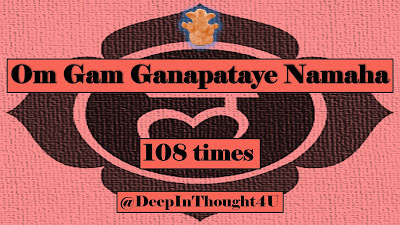
https://youtu.be/8mILpfhEo5w
Resources:Background music: The Sleeping Prophet, Jesse GallagherBackground pictures:https://www.netclipart.com/isee/xJmiR...
References:https://www.mindbodygreen.com/0-4552/...
June 11, 2020
Om - Mantra for meditation
ॐ
Sarvadvaraani samyamya mano hrudi nirudya chaMoordhnyaadhaayaatmanah praanam aasthito yogadhaaranaam
Omityekaaksharam Brahma vyaaharanmaamanusmaranYah prayaati tyajandeham sa yaati paramaam gatim
[When one] closes all the gates of the body, confines the mind within the heart,Fixes the life-energy in the head, engages in steadfast yoga
[When one] utters the monosyllable Om that is Brahma, focuses on Me [Supreme Soul],[One] leaves the body thus, and attains the Supreme Goal
{Bhagavad Gita, Chapter 8, Verse 12-13}
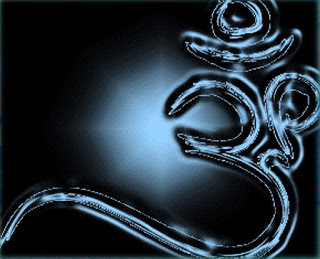
Om is the Primordial Sound of the Vedas, Pranava of the Yoga Sutras of Patanjali, and Brahman of the Bhagavad Gita.
Uttered at the beginning and end of shlokabhyasa (shloka practice) and yogabhyasa (yoga practice), Om is made up of three basic sounds: A-U-M, which represent the following:
Planes Gods Vedas A (aa) Physical Brahma Rig U (oo) Mental & astral Vishnu Yajur M (mm) Deep-sleep Shiva Sama
Several studies have revealed the health benefits of chanting and meditating on Om: mental alertness and physical relaxation, along with cardiac rhythm synchronization (see references below).
108 is considered to be a significant number in yoga, Vedic mathematics, astrology and numerology. For instance, the distance of sun and moon from earth is said to be 108 times their respective diameters. There are said to be 108 Upanishads and 108 tirthsthals (places of pilgrimage). In yoga, 108 suryanamaskars (sun salutations) are performed during Rathasaptami (sun festival).
In this video Om has been repeated 108 times, at the rate of about four per minute.
Meditate to the sacred sound of Om:
https://youtu.be/3fpCsxx-l1Q
If you are not keen on meditative process, you could try relaxation therapy: lie down, close your eyes, take deep breaths, and relax your muscles while listening to the sound of Om. The duration of this video will amount to less than half-hour of your daily relaxation therapy.
References & resources:
Significance of Om:The Bhagavad Gita, Trans. Swami Chidbhavananda, Sri Ramakrishna Tapovanam, Tirupparaitturai, Fourth Edition, 1989https://www.ncbi.nlm.nih.gov/pmc/arti...
https://wanderlust.com/journal/108-yo...
https://www.yogajournal.com/yoga-101/...
Background music: Satya Yuga, Jesse Gallagher
Pictures of Om:http://www.pngall.com/wp-content/uplo...
Vlog: Om - Mantra for meditation
ॐ
Sarvadvaraani samyamya mano hrudi nirudya chaMoordhnyaadhaayaatmanah praanam aasthito yogadhaaranaam
Omityekaaksharam Brahma vyaaharanmaamanusmaranYah prayaati tyajandeham sa yaati paramaam gatim
[When one] closes all the gates of the body, confines the mind within the heart,Fixes the life-energy in the head, engages in steadfast yoga
[When one] utters the monosyllable Om that is Brahma, focuses on Me [Supreme Soul],[One] leaves the body thus, and attains the Supreme Goal
{Bhagavad Gita, Chapter 8, Verse 12-13}

Om is the Primordial Sound of the Vedas, Pranava of the Yoga Sutras of Patanjali, and Brahman of the Bhagavad Gita.
Uttered at the beginning and end of shlokabhyasa (shloka practice) and yogabhyasa (yoga practice), Om is made up of three basic sounds: A-U-M, which represent the following:
Planes Gods Vedas A (aa) Physical Brahma Rig U (oo) Mental & astral Vishnu Yajur M (mm) Deep-sleep Shiva Sama
Several studies have revealed the health benefits of chanting and meditating on Om: mental alertness and physical relaxation, along with cardiac rhythm synchronization (see references below).
108 is considered to be a significant number in yoga, Vedic mathematics, astrology and numerology. For instance, the distance of sun and moon from earth is said to be 108 times their respective diameters. There are said to be 108 Upanishads and 108 tirthsthals (places of pilgrimage). In yoga, 108 suryanamaskars (sun salutations) are performed during Rathasaptami (sun festival).
In this video Om has been repeated 108 times, at the rate of about four per minute.
Meditate to the sacred sound of Om:
https://youtu.be/3fpCsxx-l1Q
If you are not keen on meditative process, you could try relaxation therapy: lie down, close your eyes, take deep breaths, and relax your muscles while listening to the sound of Om. The duration of this video will amount to less than half-hour of your daily relaxation therapy.
References & resources:
Significance of Om:The Bhagavad Gita, Trans. Swami Chidbhavananda, Sri Ramakrishna Tapovanam, Tirupparaitturai, Fourth Edition, 1989https://www.ncbi.nlm.nih.gov/pmc/arti...
https://wanderlust.com/journal/108-yo...
https://www.yogajournal.com/yoga-101/...
Background music: Satya Yuga, Jesse Gallagher
Pictures of Om:http://www.pngall.com/wp-content/uplo...



